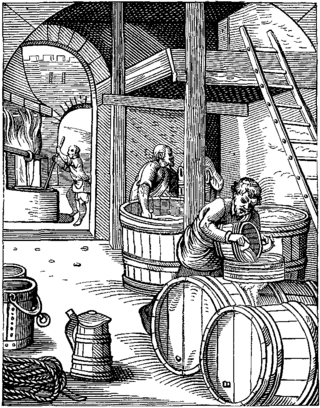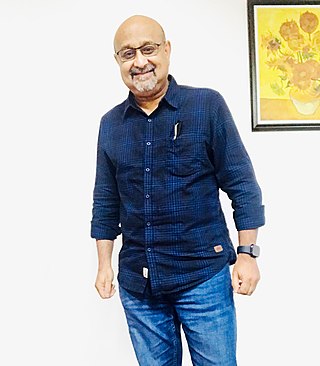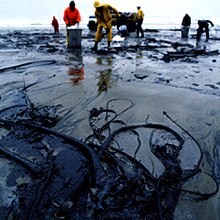
Bioremediation broadly refers to any process wherein a biological system, living or dead, is employed for removing environmental pollutants from air, water, soil, flue gasses, industrial effluents etc., in natural or artificial settings. The natural ability of organisms to adsorb, accumulate, and degrade common and emerging pollutants has attracted the use of biological resources in treatment of contaminated environment. In comparison to conventional physicochemical treatment methods bioremediation may offer considerable advantages as it aims to be sustainable, eco-friendly, cheap, and scalable.

Biotechnology is the application of scientific and engineering principles to the processing of materials by biological agents to provide goods and services. From its inception, biotechnology has maintained a close relationship with society. Although now most often associated with the development of drugs, historically biotechnology has been principally associated with food, addressing such issues as malnutrition and famine. The history of biotechnology begins with zymotechnology, which commenced with a focus on brewing techniques for beer. By World War I, however, zymotechnology would expand to tackle larger industrial issues, and the potential of industrial fermentation gave rise to biotechnology. However, both the single-cell protein and gasohol projects failed to progress due to varying issues including public resistance, a changing economic scene, and shifts in political power.
There are a number of different waste treatment technologies for the disposal, recycling, storage, or energy recovery from different waste types. Each type has its own associated methods of waste management.

The Oil and Natural Gas Corporation Limited (ONGC) is an Indian central public sector undertaking under the ownership of Ministry of Petroleum and Natural Gas, Government of India. The company is headquartered in Delhi. ONGC was founded on 14 August 1956 by the Government of India. It is the largest government-owned-oil and gas explorer and producer in the country and produces around 70 percent of India's domestic production of crude oil and around 84 percent of natural gas. ONGC is vertically integrated across the entire oil and gas industry. In November 2010, the Government of India conferred the Maharatna status to ONGC.

Ananda Mohan Chakrabarty, PhD was an Indian American microbiologist, scientist, and researcher, most notable for his work in directed evolution and his role in developing a genetically engineered organism using plasmid transfer while working at GE, the patent for which led to landmark Supreme Court case, Diamond v. Chakrabarty.
The Department of Biotechnology (DBT) is an Indian government department, under the Ministry of Science and Technology responsible for administrating development and commercialisation in the field of modern biology and biotechnology in India. It was set up in 1986.

UF Innovate | Accelerate @ Sid Martin Biotech is located in Alachua, Florida, in Progress Park. The program's mission is to foster the growth of bioscience startup companies that have some relationship to the university. The Incubator works with companies in all product areas relating to the life sciences, biomedical research, medicine, and chemical sciences.

The Energy and Resources Institute (TERI) is a research institute in New Delhi that specializes in the fields of energy, environment and sustainable development. Established in 1974, it was formerly known as the Tata Energy Research Institute. As the scope of its activities widened, it was renamed The Energy and Resources Institute in 2003.
Petroleum microbiology is a branch of microbiology that deals with the study of microorganisms that can metabolize or alter crude or refined petroleum products. These microorganisms, also called hydrocarbonoclastic microorganisms, can degrade hydrocarbons and, include a wide distribution of bacteria, methanogenic archaea, and some fungi. Not all hydrocarbonoclasic microbes depend on hydrocarbons to survive, but instead may use petroleum products as alternative carbon and energy sources. Interest in this field is growing due to the increasing use of bioremediation of oil spills.
Bioremediation of petroleum contaminated environments is a process in which the biological pathways within microorganisms or plants are used to degrade or sequester toxic hydrocarbons, heavy metals, and other volatile organic compounds found within fossil fuels. Oil spills happen frequently at varying degrees along with all aspects of the petroleum supply chain, presenting a complex array of issues for both environmental and public health. While traditional cleanup methods such as chemical or manual containment and removal often result in rapid results, bioremediation is less labor-intensive, expensive, and averts chemical or mechanical damage. The efficiency and effectiveness of bioremediation efforts are based on maintaining ideal conditions, such as pH, RED-OX potential, temperature, moisture, oxygen abundance, nutrient availability, soil composition, and pollutant structure, for the desired organism or biological pathway to facilitate reactions. Three main types of bioremediation used for petroleum spills include microbial remediation, phytoremediation, and mycoremediation. Bioremediation has been implemented in various notable oil spills including the 1989 Exxon Valdez incident where the application of fertilizer on affected shoreline increased rates of biodegradation.

Bioremediation is the process of decontaminating polluted sites through the usage of either endogenous or external microorganism. In situ is a term utilized within a variety of fields meaning "on site" and refers to the location of an event. Within the context of bioremediation, in situ indicates that the location of the bioremediation has occurred at the site of contamination without the translocation of the polluted materials. Bioremediation is used to neutralize pollutants including Hydrocarbons, chlorinated compounds, nitrates, toxic metals and other pollutants through a variety of chemical mechanisms. Microorganism used in the process of bioremediation can either be implanted or cultivated within the site through the application of fertilizers and other nutrients. Common polluted sites targeted by bioremediation are groundwater/aquifers and polluted soils. Aquatic ecosystems affected by oil spills have also shown improvement through the application of bioremediation. The most notable cases being the Deepwater Horizon oil spill in 2010 and the Exxon Valdez oil spill in 1989. Two variations of bioremediation exist defined by the location where the process occurs. Ex situ bioremediation occurs at a location separate from the contaminated site and involves the translocation of the contaminated material. In situ occurs within the site of contamination In situ bioremediation can further be categorized by the metabolism occurring, aerobic and anaerobic, and by the level of human involvement.
Brahm Shanker Srivastava is an Indian microbiologist, inventor and a former deputy director and head of Microbiology division of the Central Drug Research Institute. He is the founder of Biotech Research, a non-profit non governmental institution promoting research in the field of biotechnology and is a director of Nextec Lifesciences Private Limited, a start up involved in biomedical products and research applications. He is known for his researches on microbial genetics and is an elected fellow of the National Academy of Sciences, India.
Chinmoy Sankar Dey is an Indian molecular biologist and a professor at Kusuma School of Biological Sciences of the Indian Institute of Technology, Delhi. Known for his research on insulin resistance, Dey's is a J. C. Bose National Fellow of the Department of Science and Technology and an elected fellow of the National Academy of Sciences, India and the Indian National Science Academy. The Council of Scientific and Industrial Research, the apex agency of the Government of India for scientific research, awarded him the Shanti Swarup Bhatnagar Prize for Science and Technology, one of the highest Indian science awards for his contributions to Medical Sciences in 2003. He is also a recipient of the National Bioscience Award for Career Development of the Department of Biotechnology.
Anand Kumar Bachhawat is an Indian geneticist, biochemist, professor in biological sciences and the dean of faculty at the Indian Institute of Science Education and Research, Mohali. Known for his studies on microbial genetics, Bachhawat is an elected fellow of all the three major Indian science academies namely Indian Academy of Sciences, National Academy of Sciences, India and Indian National Science Academy.

Madhavan Radhakrishna Pillai is an Indian cancer biologist and the former director of the Rajiv Gandhi Centre for Biotechnology. Known for his studies on papilloma viruses, Pillai is an elected fellow of the Indian Academy of Sciences, National Academy of Sciences, India, Royal College of Pathologists and the National Academy of Medical Sciences. The Department of Biotechnology of the Government of India awarded him the National Bioscience Award for Career Development, one of the highest Indian science awards, for his contributions to biosciences in 2002.
Rakesh Kumar Jain is an Indian virologist and the former head and coordinator of the Microbial Type Culture Collection (MTCC), a national research centre located at the Institute of Microbial Technology campus. He is known for his research in virology. His studies have been documented by way of a number of articles and the online article repository of John Wiley & Sons has listed several of them. Besides, he has edited one book, A Century of Plant Virology in India, an 805-page volume compiling the research done in the field of plant virology in India during the last 100 years. The Department of Biotechnology of the Government of India awarded him the National Bioscience Award for Career Development, one of the highest Indian science awards, for his contributions to biosciences in 2002.
Sudhanshu Vrati is an Indian immunologist, microbiologist and the director of the Regional Centre for Biotechnology. Known for his studies in the fields of RNA virus replication and vaccine development, Vrati is an elected fellow of the National Academy of Sciences, India, Indian National Science Academy and the Indian Academy of Sciences. The Department of Biotechnology of the Government of India awarded him the National Bioscience Award for Career Development, one of the highest Indian science awards, for his contributions to biosciences in 2003.
Dr. Manmohan Parida, Sc ‘H’ is the director of the Indian Defence Research and Development Establishment (DRDE) in Gwalior. He assumed the position with effect from 1 October 2021. He obtained his graduation in Veterinary Science from Odisha Veterinary College as best graduate with three Gold Medals into his credit. He earned his master's degree in Veterinary Virology from prestigious Indian Veterinary Research Institute, Mukteswar and further obtained his Doctorate Jiwaji University, Gwalior in Microbiology. He was also awarded with Monbusho Fellowship from Japanese Govt and pursued Post Doctoral Research Scientist at Institute of Tropical Medicine, WHO reference center for research on arboviruses, Nagasaki, Japan.
Sanjib Senapati is an Indian biophysicist, biochemist, biotechnologist and a professor at the Bhupat and Jyoti Mehta School of Biosciences, Department of Biotechnology of the Indian Institute of Technology Madras. He is known for his studies in the fields of protein dynamics, green chemistry and nanoclusters and is a Fulbright scholar. The Department of Biotechnology of the Government of India awarded him the National Bioscience Award for Career Development, one of the highest Indian science awards, for his contributions to biosciences, in 2015.
Pratyoosh Shukla is an Indian Microbiologist specialized in Enzyme technology and Protein Bioinformatics. He is presently working as Professor and Coordinator of the School of Biotechnology at the Institute of Science, Banaras Hindu University, Varanasi, India. He was awarded with Indo-USA Research Professor at Department of Environmental Health, College of Medicine, University of Cincinnati, USA in the year 2014 by American Society of Microbiology (ASM) and Indo-U.S. Science and Technology Forum (IUSSTF). He is Fellow of National Academy of Agricultural Sciences (FNAAS), Fellow of Academy of Microbiological Sciences (FAMSc/FAMI), Fellow of Biotech Research Society of India (FBRS).









